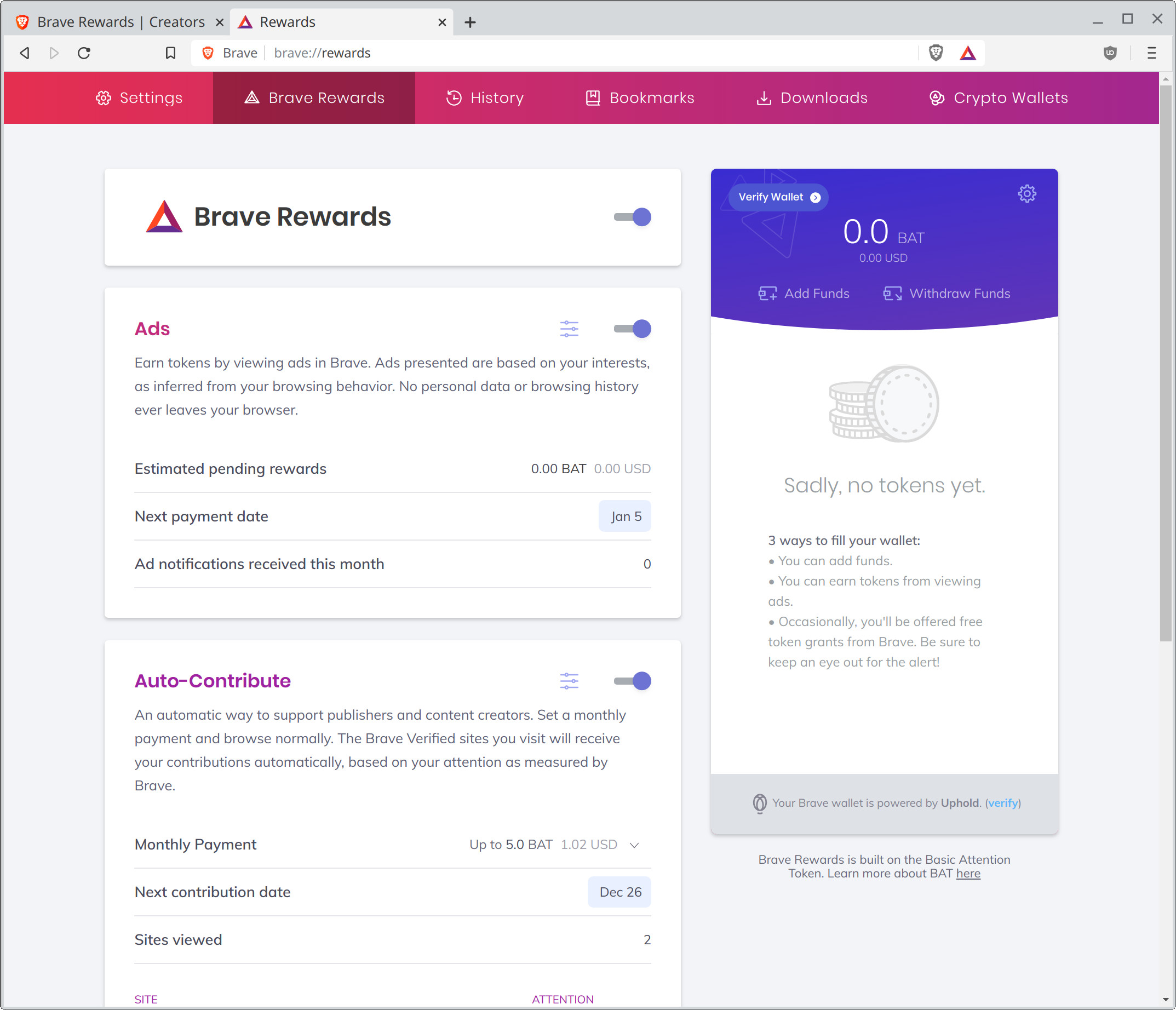

CNAME uncloaking is also enabled to block additional resources that may normally go undetected.

In this mode, Brave will block any identified first-party content specified by default filter lists.
BRAVE ADBLOCK FULL
Brave also uses lists to block coin miners and scripts that engage in "notifications spam." The current, full set of filter lists Brave uses can be found in our source.įifth, Brave uses lists generated by the HTTPSEverywhere project to identify URLs that can be upgraded to encrypted, HTTPS connections, and to make those upgrades automatically on behalf of our users. URLs identified by these lists are either blocked, or have their resources modified, to protect users. These lists include EasyList and EasyPrivacy, lists generated by the uBlock Origin project, and lists maintained by Brave itself. Brave by default only does this in third party contexts, but can be modified to perform the same protections globally, or not-at-all.įourth, Brave pulls from a variety of community developed filter lists, or lists of URLs used for carrying out advertising or tracking. Brave modifies or returns false values for a number of Web API endpoints that can be used to identify users (e.g. Third, Brave prevents third party frames from tracking users through passive finger printing techniques. Brave "lies" on these requests, and says the request was being issued from the same domain being requested, instead of the true, cross-domain origin. Second, Brave modifies the referrer header when making cross origin requests. By default, Brave never sends cookies to third parties, nor respects storage setting and reading operations by scripts operating in the third party contexts. Because of platform restrictions, Brave is not able to use all of these techniques on iOS, though we are constantly looking for ways of increasing protections on that platform.įirst, Brave blocks the most common tracking mechanism, sending cookies to third party resources.

The majority of the below described techniques are controlled by the "Shields" panel in Brave, and can be disabled if and when the user desires too. Blocking Techniques and Methodsīrave makes a best effort attempt to enforce the above policy, through a number of steps. Many Shields settings have two levels of strength to accommodate these use cases for advanced users, and Brave's adblocker is extensible with custom filter list entries and subscriptions. Crypto mining scripts are only one such example, but when possible, Brave will modify websites and requests to improve the user experience.īrave also aims to empower users who wish to block first-party advertising and tracking scripts, even though doing so often comes at an increased risk of website breakage. These scripts use the user's computer in an intensive manner to try and earn money for the hosting website, and result in degraded performance and reduced battery life. For example, Brave blocks crypto-mining scripts. Such identification techniques are just as harmful to users as traditional cookie-based tracking.įinally, Brave intentionally blocks website behaviors that are harmful to users, whether or not those behaviors are privacy-harming.
BRAVE ADBLOCK CODE
Similarly, Brave also blocks code that attempts to identify users based on unique browser characteristics, hardware configuration and similar semi-unique data points. In other words, Brave does not try to block first party ads, but won't take efforts to unblock first-party ads if they're being blocked by other steps. While Brave does not intentionally target first-party advertising for blocking, Brave doesn't consider it an error either. In practice, it is difficult-to-impossible to distinguish third-party advertising with third-party tracking, so Brave blocks both. Brave's goal in doing so is not to block the advertisement images themselves, but to block the tracking such advertisements cause. Blocking Goals and Policyīrave's default settings attempt to protect user privacy by blocking third party advertising. We can only at best "approximate" the policy because of the wide variety in how websites work, and the efforts trackers go to circumvent user protections. This document describes both the policy Brave uses to decide what to block and modify, and the techniques Brave uses to approximate the policy in the browser. Brave does this to protect user privacy, improve website performance, and generally improve the experience for users. Brave modifies how websites execute, and what network requests websites can make.


 0 kommentar(er)
0 kommentar(er)
